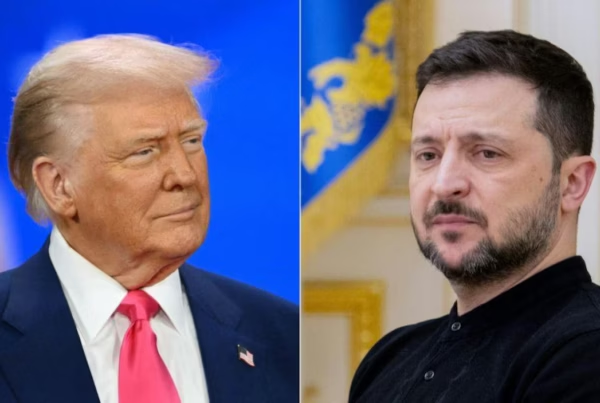Cover : Prime Minister Trudeau of Canada (Left), Prime Minister Modi of India (Right). (A look at Canada and India and their relationship, by the numbers | AP News)
In recent months, the crumbling diplomatic relationship between Canada and India has made headlines, giving the world a short glimpse into an arduous struggle that has plagued both countries for decades.
The latest breakdown in diplomacy comes after the assassination of Sikh separatist leader Hardeep Singh Nijjar on Canadian soil in June 2023, which prompted both countries to recall their respective diplomats and limit trade relations.
This diplomatic rift represents a much longer set of growing tensions between these two countries. To understand how tensions escalated so greatly and why the assassination was such a massive deal, it is important to first understand the historical context in which these problems arose, starting centuries ago with the emergence of Sikhism and the Khalistan movement.
Sikhism is a religion that gained popularity in Northern India during the fifteenth century under Mughal rule. In 1699, a movement to ensure Sikh political rule and religious protection began under Guru Gobind Singh. However, early Sikh organizing was mostly mild and non-militant. In 1947, when India was partitioned, a more ambitious mass movement developed. This was the Punjabi Suba movement, which sought a separate Sikh state known as Khalistan.
In 1952, friction between Sikhs and the rest of India’s (largely Hindu) population emerged after Prime Minister Nehru rejected demands to create a separate Punjabi-speaking state, and instead included the state of Punjab—whose population is majority Sikh—in Indian territory. Tensions continued to rise between Sikhs and Hindus. They eventually came to a boil in the 1970s after Jarnail Singh Bhindranwale reignited the Khalistan movement—this time as a violent revolt.
For more than ten years, brutal Sikh uprisings broke out across India and in Sikh diasporas abroad. When these uprisings surfaced, they were violently shut down by the Indian government, which killed hundreds of people.
Across the 1980s, three main events exacerbated the unease between Sikhs and Hindus. The first of these was the storming of the Golden Temple in 1984. The Golden Temple in Punjab is considered a sacred site in Sikhism and was a place where Sikh separatists hid from the Indian government. In 1984, the Indian government launched a military attack on the Golden Temple, killing at least 400 people. Sikh groups and the Indian government contest the exact number of casualties; whatever the real figure may be, it is safe to say that this attack stoked the anger of Sikh separatists, who now sought revenge.
Just a few months later, on October 31, 1984, Prime Minister Indira Gandhi was shot dead by two of her Sikh bodyguards. Hindus, angered by the assassination, started violent anti-Sikh riots across India.
But how exactly does Canada fit into all of this?
Canada is home to about 770,000 Sikhs, hosting the largest Sikh diaspora in the world. The Sikh diaspora in Canada had some presence in the Khalistan movement, but the divide between Canada and India truly began on June 23, 1985, with the explosion of Air India Flight 182.
Air India Flight 182 was on its way from Toronto to London and then to Mumbai in 1985 when it exploded only about 45 minutes away from its destination. All 329 passengers on board were killed. At first, the cause of the crash was not made public, but it soon became clear that Sikh extremists were behind the bombing.
Five months later, two suspects were arrested by the Canadian police, but charges on both individuals were eventually dropped. One of the two, Inderjit Singh Reyat, was later recharged. He pled guilty in connection to the bombing this time, but was given only a five-year sentence. Eventually, two more suspects were arrested but they were later acquitted.
India was discontent with the Canadian government and police’s handling of the Air India Flight 182 incident. It felt that the perpetrators were not sufficiently punished. Today’s Indian government still carries this grievance.
After the fact, the way both countries interpreted the incident led to greater separation. Multiple scholars in Canada considered the bombing to be a “foreign tragedy” because the victims were largely of Indian descent, even though the majority were Canadian citizens. It is estimated that 90% of Canadians had little to no knowledge about the attack. There was no official apology from Canada towards the victims until 2010, which the Indian government interpreted as a lack of care towards the victims.
A few decades later, in the early 2000s, the Khalistan movement began to die down and India and Canada were able to establish a relatively peaceful relationship. That is until Justin Trudeau became Prime Minister.
In recent years, leaders of the Canadian government have been protective and supportive of their Sikh populations, relying on their votes in elections. Despite the fact that Canada is home to the largest Sikh diaspora outside of India, most Canadians know little about the Khalistan movement, which amplifies cultural and political misunderstandings with India. While most Sikhs are not a part of the separatist movement, the Indian government feels that Canada is not only supporting their Sikh population but also allowing the Khalistan terrorist movement to exist.
In 2018, Prime Minister Trudeau went to a formal dinner planned by the Canadian High Commissioner in New Delhi as a way to bridge any existing tensions with India. However, controversy soon sparked when word got out that Jaspal Singh Atwal was invited to the dinner. Atwal was a Canadian-Indian member of the International Sikh Youth Foundation, an organization listed as a terrorist organization on Canada’s Public Safety Website. After an uproar was sparked in India by a photograph of Atwal with the Canadian Prime Minister and his wife, Atwal was uninvited, but the damage had already been done.
On 8 June 2023, a parade float depicting the assassination of Indira Gandhi was displayed in Ontario, drawing condemnations from India’s foreign minister. Indian officials felt that this incident was an example of Canada’s overly tolerant approach to Sikh separatists within its borders.
Later that month, Sikh separatist leader—and Canadian citizen—Hardeep Singh Nijjar was killed in Surrey, British Columbia. Canada suspected that the Indian government was behind his death, and in September of 2023 paused some trade negotiations with India.
In October of the same year, Canada withdrew forty-one of its diplomats from India after the Indian government threatened to get rid of diplomatic immunity and security for Canadian diplomats’ relatives. India’s Ministry of External Affairs justified this move, stating, “The state of our bilateral relations, the much higher number of Canadian diplomats in India, and their continued interference in our internal affairs warrant a parity in mutual diplomatic presence in New Delhi and Ottawa.”
In May of this year, three people were arrested for Nijjar’s death. Then, in October, Trudeau accused the Indian government of being responsible for Nijjar’s death and expelled six Indian diplomats from Canada, saying that Canadian authorities had found evidence that India was threatening Canada’s public safety. India remained adamant that these claims were false and expelled Canada’s top diplomats in return.
The Indian Ministry of External Affairs then released a statement that Trudeau’s claims were unfounded and were based on “political gains,” prompting questions about Trudeau’s motivations for India. Sikhs hold fifteen seats in the Canadian House of Commons, and most are from important battleground areas for elections. Given the timing of these allegations, some Indian officials believed they were a tactical ploy to win over Sikh votes for Trudeau, who is at risk of losing his position as prime minister in next year’s elections.
But it is relevant to note that all parties in Canada have shown support towards Sikhs and allowed the presence of Khalistan individuals–not just Trudeau’s Liberal Party. In fact, Sikhs are generally more supportive of the Conservative party (with 54% of Sikhs in Canada intending to vote for the Conservative Party), suggesting that Trudeau’s actions are likely not purely politically motivated.
In an interview with the BBC, Michael Kugelman of the Wilson Center explained that these diplomatic tensions have been amplified by misunderstandings: “There’s a lot at play that explains the rapid deterioration in bilateral ties. This includes a fundamental disconnect: what India views, or projects, as a dangerous threat is seen by Canada as mere activism and dissent protected by free speech. And neither is willing to make concessions.”
Today, the future of Canadian and Indian relations looks uncertain. In the past, Canada and India have relied on their bilateral trade, which reached about nine billion dollars in value in 2022 alone. However, as unease between the two countries continues to grow, there is no telling how it could potentially affect the countries’ economic relationship.
Unfortunately, it is unlikely that the conflict will be resolved anytime soon. India is now accusing Ottawa of protecting and aiding anti-India terrorists, a bold claim that emphasizes how strained the bilateral relationship has become. Mr. Kugelman underlined the severity of these accusations, recounting, “But of late, the language making these allegations against Canada has been stronger than it has been against Pakistan. And that’s saying something.”
As of now, it appears that relations between the two countries have hit rock bottom. Only time will tell if the deteriorating Canadian-Indian relationship can ever be repaired.
Other posts that may interest you:
- NAFTA’s Dark Side, and the Bloody Link Between Economic Exploitation and Femicide
- The Arctic Awakens—A New Geopolitical Hotspot in a Warming World
Discover more from The Sundial Press
Subscribe to get the latest posts sent to your email.





